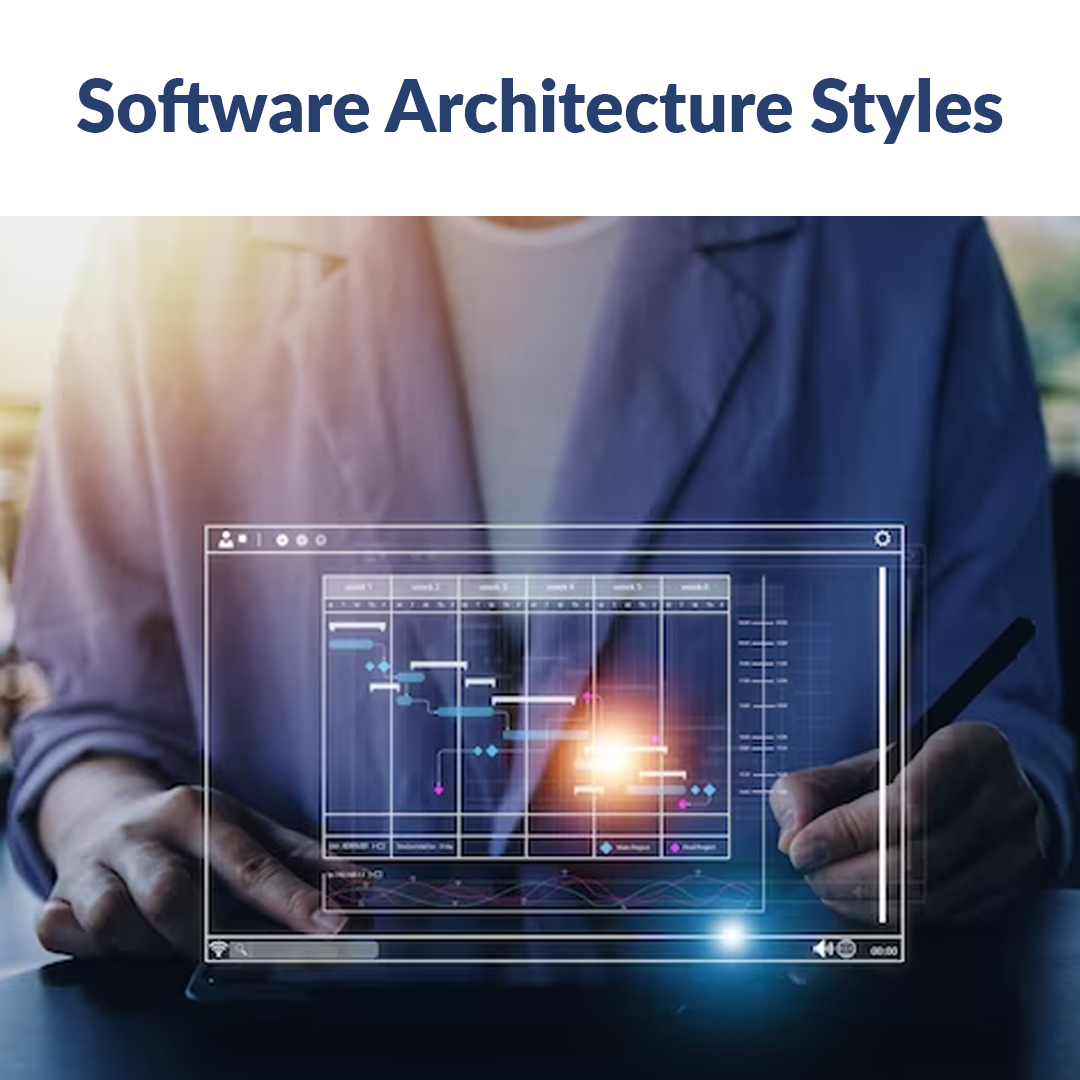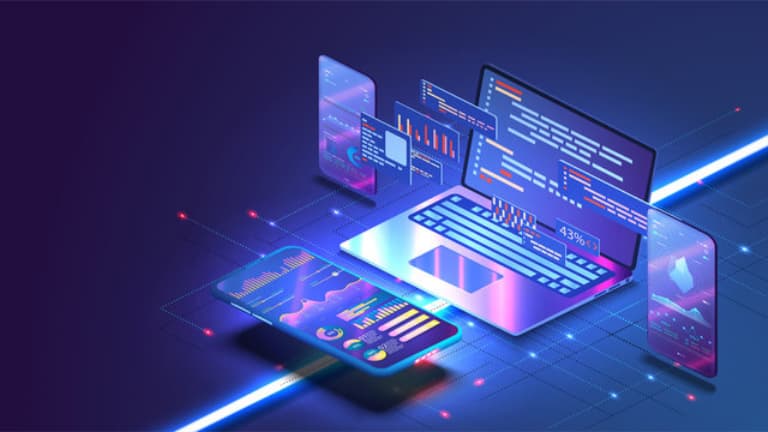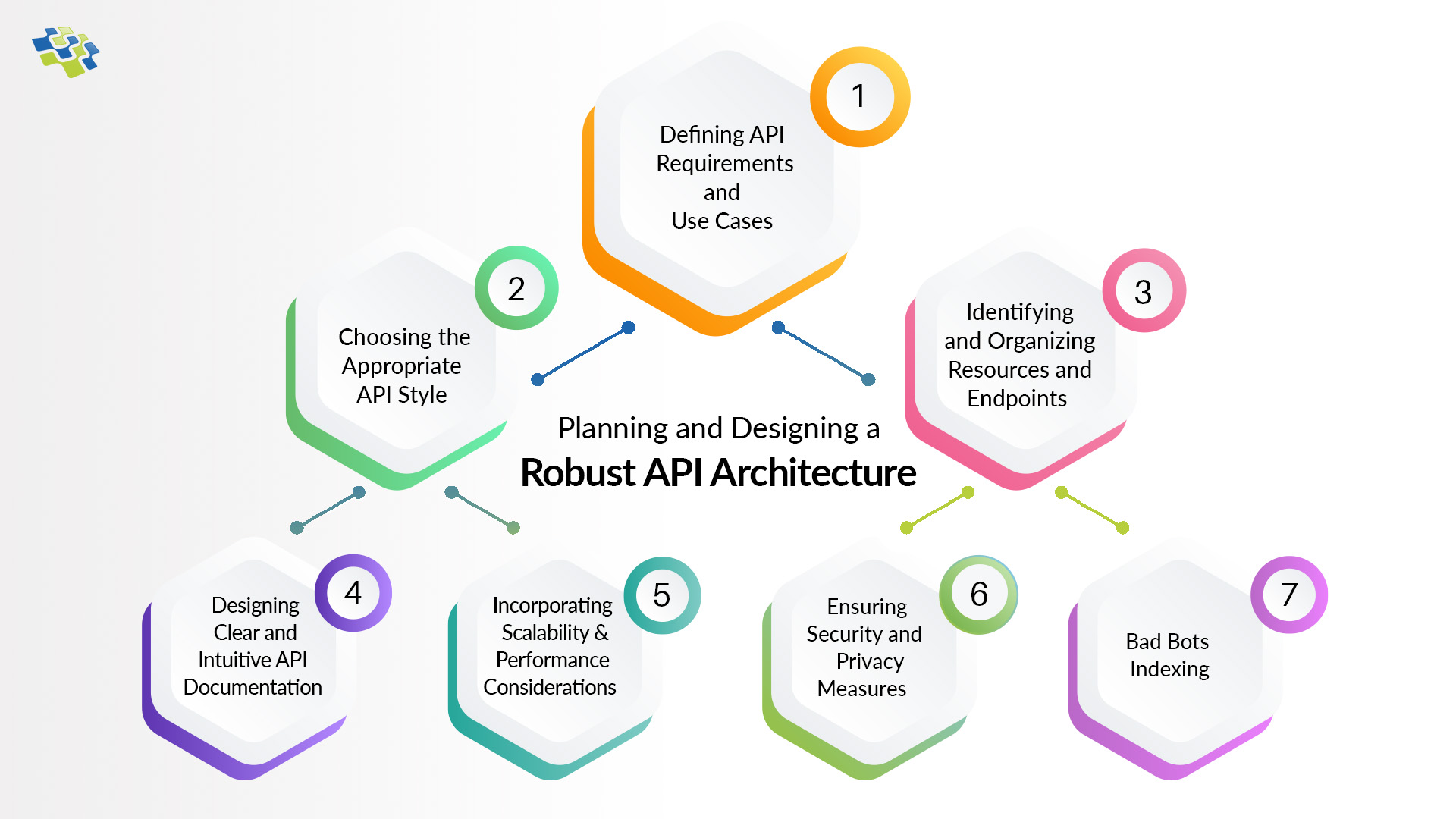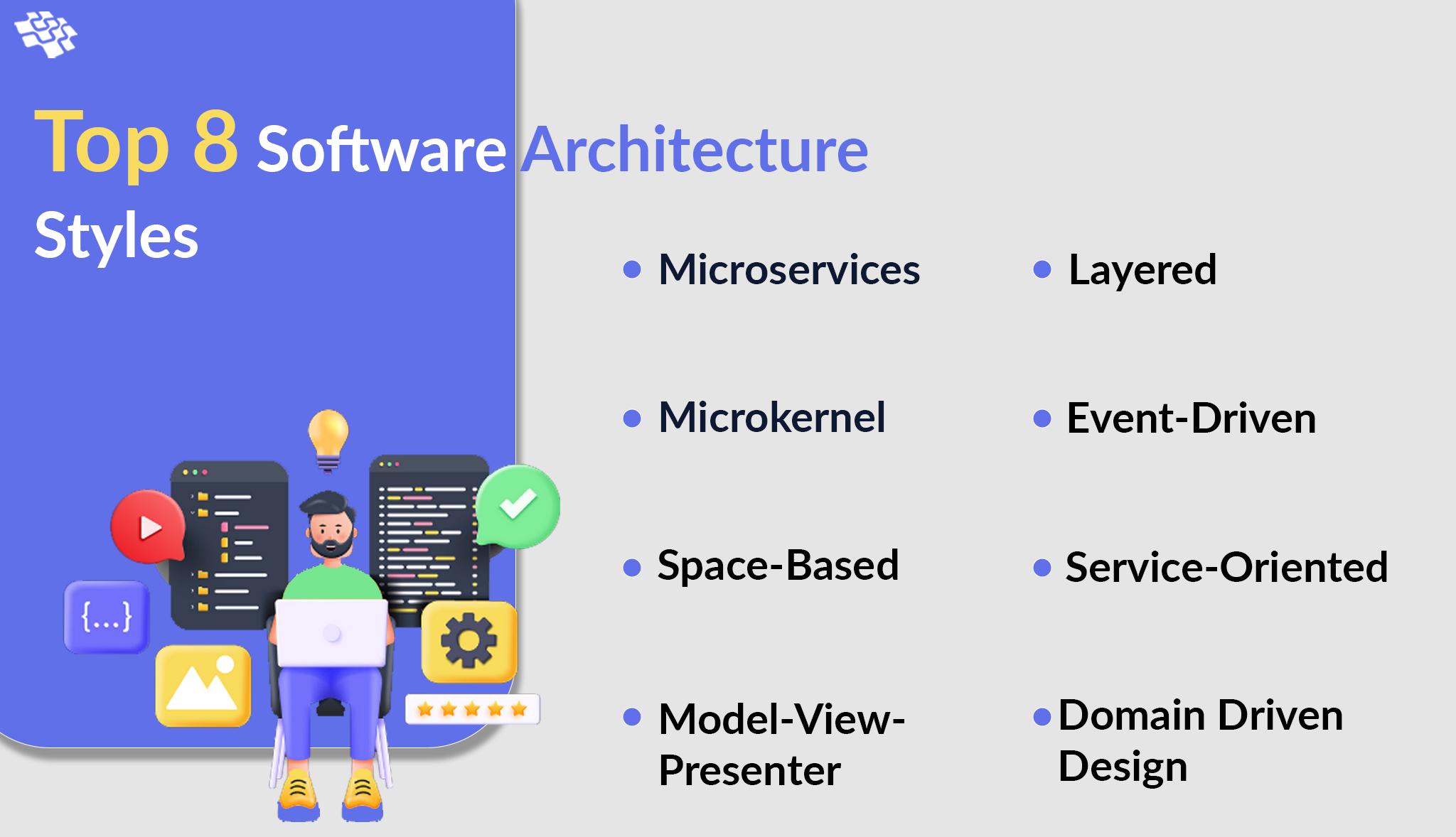Top 8 Software Architecture Styles You Should Select for Your Project
This blog delves into the intricate aspects or fundamentals of software architecture styles, emphasizing their paramount importance in guiding the development process and ensuring alignment with organizational objectives.

Struggling with Technology Stack Compatibility Issues? We Provide Tailored Solutions for Seamless Architecture Alignment

“Architectural decisions have become inconsistent—in most cases—with cloud-native patterns, processes, and infrastructures. Even more so, the role of the software architect styles has needed to evolve with the advent of iterative, faster cycle, Agile methodologies delivered in a DevOps-driven culture.”- Forbes
What is Software Architecture?
Software architecture involves strategically organizing and developing a software system at a prominent level. This encompasses the identification and selection of pertinent elements, their arrangement to achieve specific objectives, and the establishment of their interrelationships. The overarching goal of software architecture is to build a system capable of evolving and adapting to meet the evolving demands of organizations and users. This design process prioritizes factors such as security, scalability, and maintainability. Software architecture serves as the conceptual foundation, ensuring the system’s longevity, flexibility, and alignment with evolving requirements, thereby enhancing its resilience and effectiveness in meeting organizational and user needs.
Why Need Software Architecture?
A robust software architecture provides a foundation for developing software that not only meets user and stakeholder needs but also ensures the fulfillment of both functional and non-functional requirements, encompassing dependability, security, and performance. Well-designed architectures enable the creation of software that is easily extendable and modifiable, facilitating adaptation to evolving business needs. As software systems become more intricate, managing complexity becomes paramount, and software architecture plays a crucial role in this regard. It offers a high-level perspective of the system, aiding in the comprehension of its operation and structure. This, in turn, equips engineers to better identify and address issues, enabling informed decisions on system modifications. Well-developed architecture serves as a crucial tool for handling complexity in the evolving software domain.
Architectural Styles vs Architectural Patterns
Distinguishing between architectural styles and patterns is crucial, as these terms are often used interchangeably but hold distinct meanings. Architectural styles, and high-level tactics, provide a broad abstract foundation for a family of systems. They address recurring issues, promoting effective partitioning, and facilitating design reuse.
On the other hand, Architectural Patterns are more precise, focusing on specific issues or modules within a system. They offer a targeted solution to architectural problems by prescribing the arrangement of components and their interactions for specific purposes. While operating at a higher level of abstraction, architectural patterns resemble software design patterns, emphasizing systematic solutions to recurring challenges in software architecture.
Top 8 Software Architecture Styles
Software architecture styles have significantly contributed to the growth of numerous software companies. Let’s explore some popular ones that have played a very crucial role in shaping the industry.
 1. Microservices Architecture
1. Microservices Architecture
In software architecture styles, both monolithic applications and service-oriented architectures present viable alternatives to the microservices paradigm. These approaches involve delivering components as individual units through an efficient pipeline, fostering improved scalability and a high degree of decoupling within the application. Leveraging a remote access protocol, the autonomous and detached nature of components allows independent development, deployment, and testing without reliance on other service components. Notably, Netflix was an early adopter of the microservices architecture, enabling its engineering team to efficiently develop hundreds of microservices in small teams. This design has played a crucial role in delivering digital entertainment to millions of Netflix subscribers daily, highlighting the effectiveness and impact of the microservices software architecture style.
2. Layered Architecture
Within the domain of software architecture styles, the multi-layered, or n-tier architecture, is gaining popularity due to its resemblance to traditional IT communication structures. Comprising four primary layers—presentation, business, persistence, and database—this architecture, exemplified by frameworks like Java EE, can extend to include application, service, or data access layers. While often applied in sizable applications, smaller organizations may integrate the persistence layer into the business layer, especially when it’s a critical part of business logic. Each layer, with specific functions, forms a closed entity, and a request progresses to the next tier only after traversing the layer below. An essential concept is the “layers of isolation,” allowing changes in one layer without impacting others. Illustrated by an eCommerce web application, the business logic for activities like cart calculations is fetched from the application to the presentation tier. The application layer serves as an integration point, facilitating seamless communication between the presentation and data layers. The data tier, the final layer, autonomously stores data without relying on the application server or business logic, showcasing the versatility and structured functionality of this architecture style.
3. MVP Architecture
Derived from the MVC pattern, the MVP (Model-View-Presenter) architecture is a UI presentation style, focusing specifically on organizing the view within a software system. Unlike prescribing the entire system’s structure, MVP outlines the arrangement of four key components. The view handles UI component rendering, while the presenter and view maintain loose coupling through the view interface. The model oversees state management and business activities, with the presenter interfacing with the view. In some systems, the model is managed through interaction between the presenter and a service (controller) layer. Unit testing for the presenter and model is facilitated by the view interface and service layer. The model houses business logic, resembling the MVC pattern. The view serves as a passive interface for data display, with the presenter managing user actions and orchestrating interactions between the model and view, making testing and maintenance more straightforward.
4. Microkernel Architecture
When it comes to software architectural styles, one unique method uses plug-in modules and a core system. The core system encapsulates essential business logic, devoid of intricate conditional procedures or unique rules, ensuring streamlined functionality. Contrastingly, plug-in modules serve as discrete components with specialized processing, designed to enhance the core system’s capabilities. Picture a task scheduler application: the microkernel orchestrates fundamental scheduling logic, while plug-ins specify tasks. The microkernel triggers these plug-ins seamlessly through a predetermined API, oblivious to their internal implementations. This architecture excels in business applications by efficiently handling both general processes and specialized functionalities. Notably, it accommodates rule sets requiring frequent updates alongside a fixed set of fundamental operations, offering a modular and scalable framework for sophisticated software systems.
5. Event-Driven Architecture
An adept orchestration of component communication, the event-driven architecture champions real-time responsiveness in systems, particularly within graphical user interfaces. Actions initiated by users, such as posting, liking, or commenting, act as catalysts for event-driven updates across the platform, ensuring a dynamic and synchronized user experience. This methodology excels in facilitating rapid responses to real-time market fluctuations, enabling the swift execution of buy/sell orders in reaction to market events. Furthermore, this architectural paradigm extends its prowess to the Internet of Things (IoT), where devices exhibit responsiveness to user inputs, exemplified by actions like activating or deactivating lights based on sensor-triggered events. By seamlessly integrating user interactions and external stimuli, this technically sophisticated, yet intuitively designed framework stands as a cornerstone for systems that demand both intricate coordination and swift adaptability in the face of real-world scenarios.
6. Space-Based Architecture
Space-based architecture efficiently encapsulates all resources within its physical volume, enabling large-scale systems to achieve heightened parallelism and efficiency compared to traditional CPU-based designs. This innovative technology streamlines workload synchronization through an open service layer, facilitating seamless communication between essential business requirements and the corresponding application servers. The abstracted hardware in space-based architectures assumes most tasks typically handled by CPUs, encompassing functions like memory management, system administration, input/output processing (I/O) operations, implementation, and device management. Particularly advantageous for software or applications with a broad user base, this architecture proves indispensable when a software design necessitates functional division for overall success. Space-based architectures offer a robust framework for optimizing performance, scalability, and resource utilization in complex computing environments.
7. Service-Oriented Architecture
Service-oriented architecture (SOA) defines a lifestyle where network-interacting services form the foundation of applications. These services, functioning as independent and precisely defined interface units, enable higher-level functionalities through collaboration. In large enterprises, SOA seamlessly integrates systems across various departments such as sales, finance, and human resources. This approach extends to the online retail sphere, where services from different vendors harmoniously combine to deliver a unified purchasing experience. Notably, SOA facilitates the integration of modern systems with legacy ones without necessitating a complete overhaul. Its versatility lies in creating a cohesive ecosystem where services operate independently yet collaboratively, emphasizing interoperability and efficiency in system integration across diverse domains.
8. DDD Architecture
Domain-driven design (DDD) is an object-oriented methodology for developing software that deeply considers the intricacies of the business domain, encompassing its components, behaviors, and their intricate relationships. The core idea is to construct a domain model that mirrors the language and understanding of domain specialists, simplifying the translation of business concepts into software solutions. This model serves as a conceptual framework for reasoning about potential solutions. A key advantage of DDD lies in its ability to foster a shared understanding among diverse members of a development team, allowing them to communicate business knowledge and requirements without relying on technical jargon. The modular and adaptable nature of the domain model enables swift updates and expansions in response to changing circumstances and specifications. Moreover, the cohesiveness and loose connections among domain model objects streamline the testing process, making it more straightforward for developers to ensure robust functionality.
Wrapping Up
Various software architecture styles, including broker, pipe-filter, and blackboard design, offer valuable frameworks in diverse software development scenarios. Regardless of the chosen style, the overarching goal remains consistent: defining fundamental features, enhancing product utility, and optimizing the efficiency of the application-building process. It is imperative to thoroughly evaluate the functionalities of each architectural style before making a final decision. An ill-suited architecture can lead to project delays and potential software failures. Choosing the most fitting architectural style necessitates a profound understanding of distinctive styles and their applicability to specific needs. Collaborating with proficient software architects, well-versed in various patterns, is crucial. At NextGen Invent, a leading agile software development company, our team of experienced software architects and engineers can assist in identifying team composition gaps, providing effective training, and fostering overall company growth.
For tailored solutions that align with your software requirements, contact us for expert guidance and support.
Related Blogs

How to Build a Robust API Architecture?
APIs play a crucial role in connecting modern technology with commercial ecosystems. With API architecture, businesses can leverage data monetization, forge valuable partnerships, and unlock new avenues for innovation and expansion.

5 Android Frameworks for Faster App Development
Today, mobile apps have become an integral part of our daily lives, profoundly impacting our routines, work habits, and study patterns. In this guide, we will delve into the top 5 widely used tools for developing Android frameworks.

A Step-by-Step Guide for Mobile App Development
In today’s world, smartphones have become ubiquitous, transcending geography and industries. It is universally acknowledged that engaging with consumers through mobile devices is the most effective way to capture their attention, generate interest in a brand, and drive sales.
Stay In the Know
Get Latest updates and industry insights every month.
 1. Microservices Architecture
1. Microservices Architecture